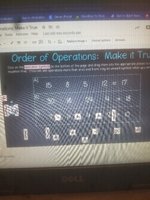As SK said, all you can do here, ultimately, is to try and try and try; there is no formal method by which you can directly find the answer. And sometimes they can be as frustrating for me as for you. My opinion has long been that these should not be presented as homework, but as puzzles to do for fun.
Of course, I've seen enough of these to know a few tricks. For (A), I first tried adding the numbers and got 40. We need to decrease that by 23, and I know that changing a + to a - would change the result by an even number, so something besides addition and subtraction is needed. Multiplication makes numbers that are mostly too big (I tried a few); division will usually produce fractions, so that isn't likely. But you might want to see what happens if you do the simplest possible division ...
My "try adding and change some to subtraction" works for (C): the sum 7 + 11 + 4 + 2 = 24, which you have to decrease by 14. Do you see how to get to the answer from there?


